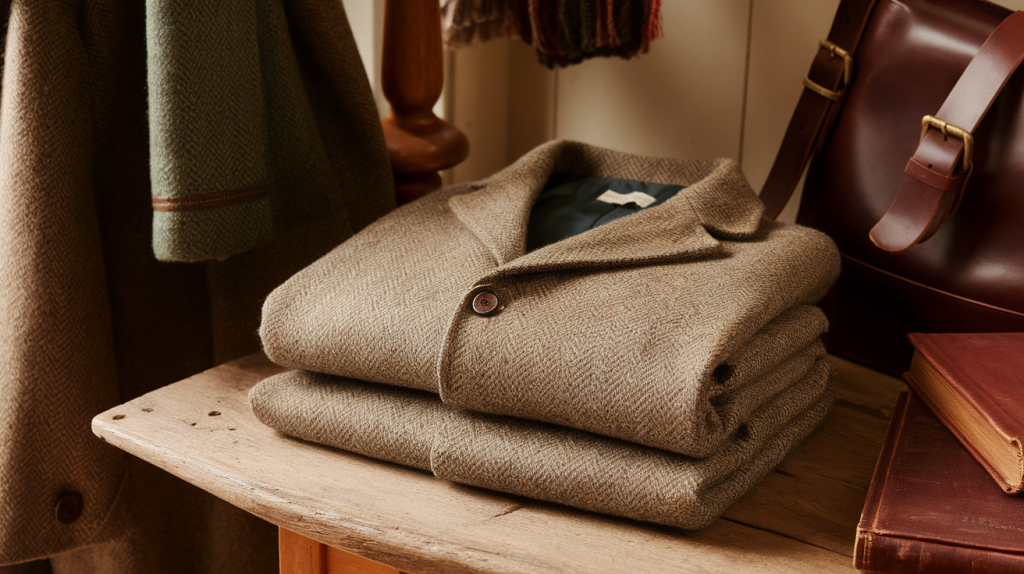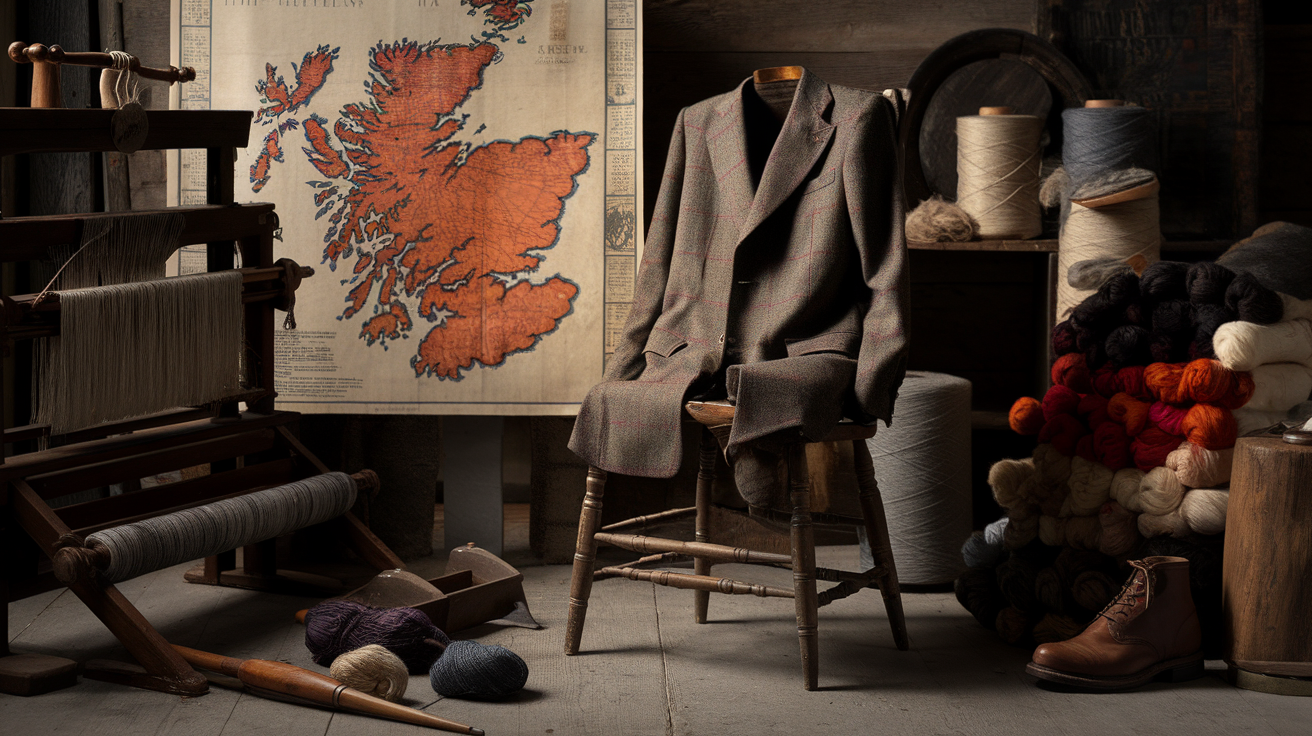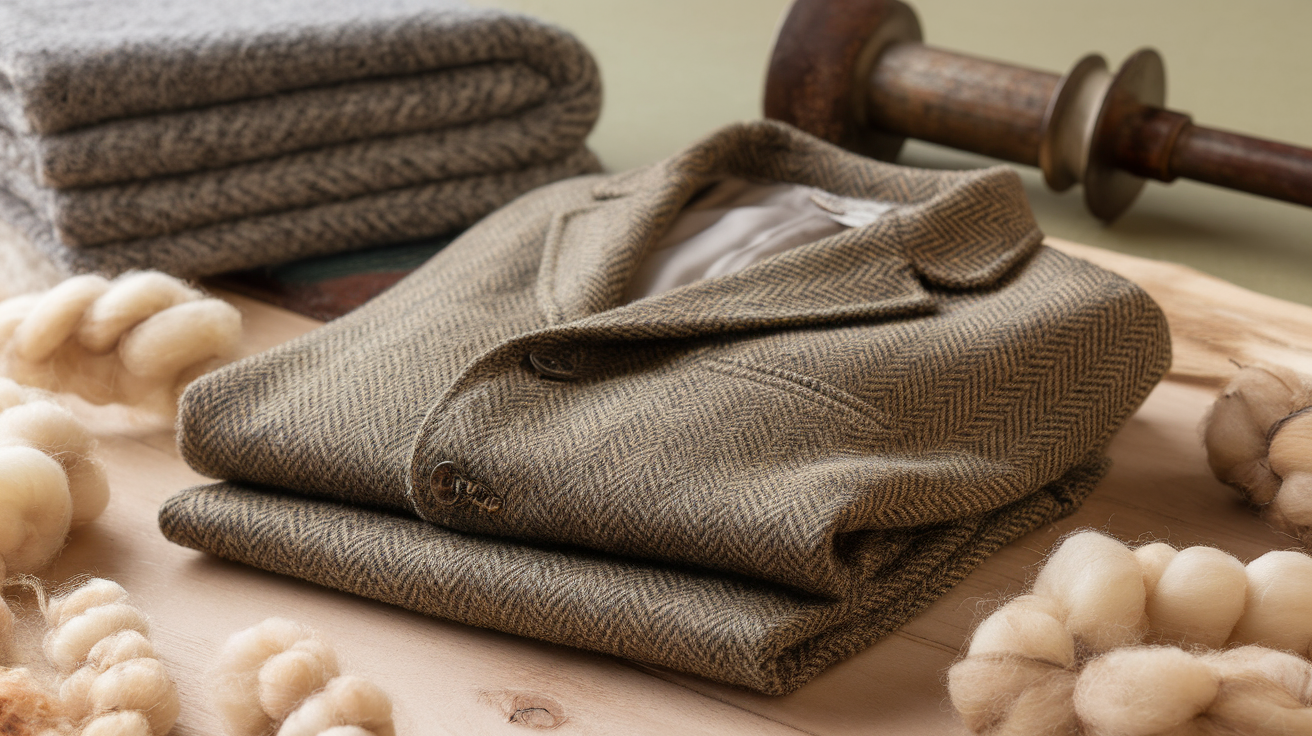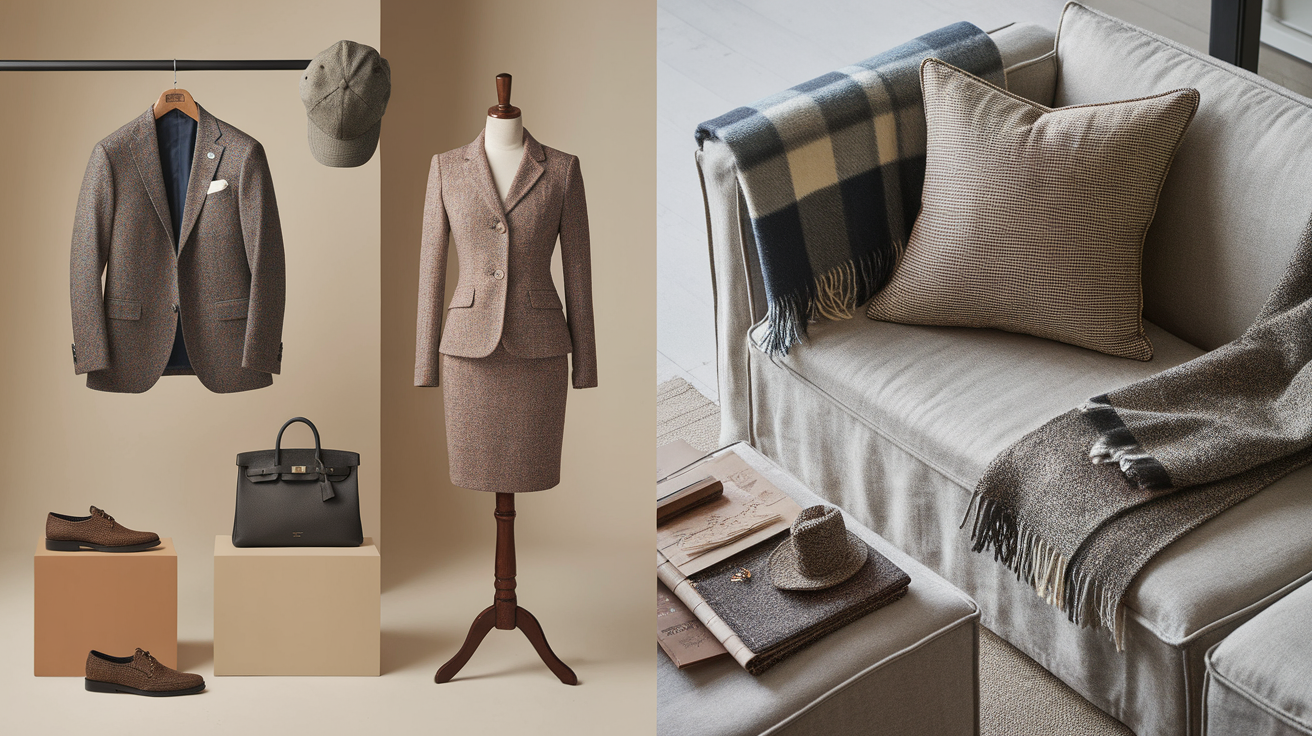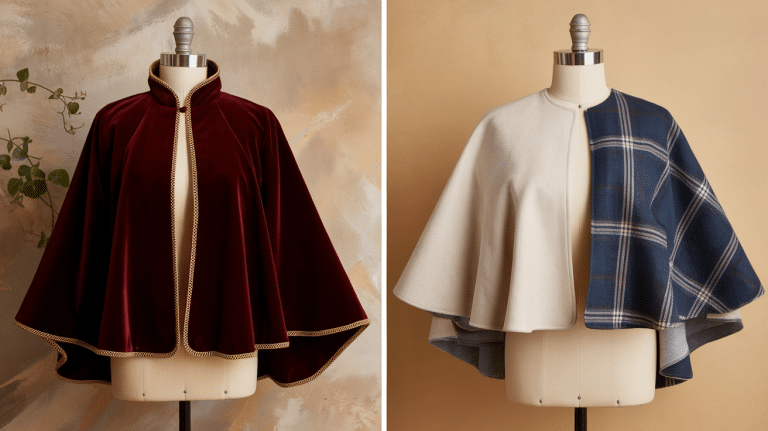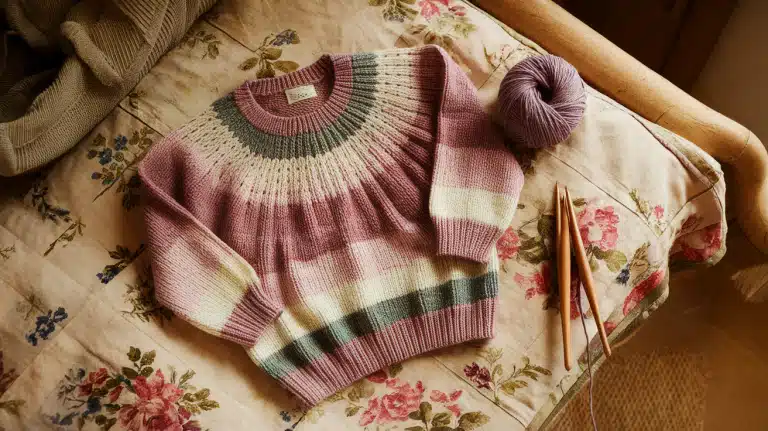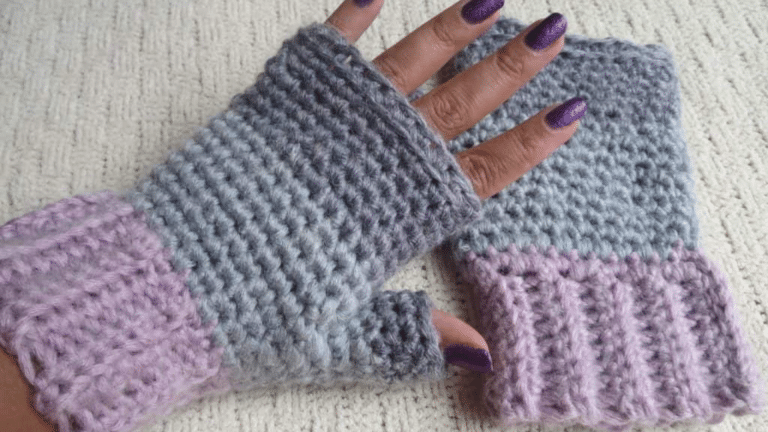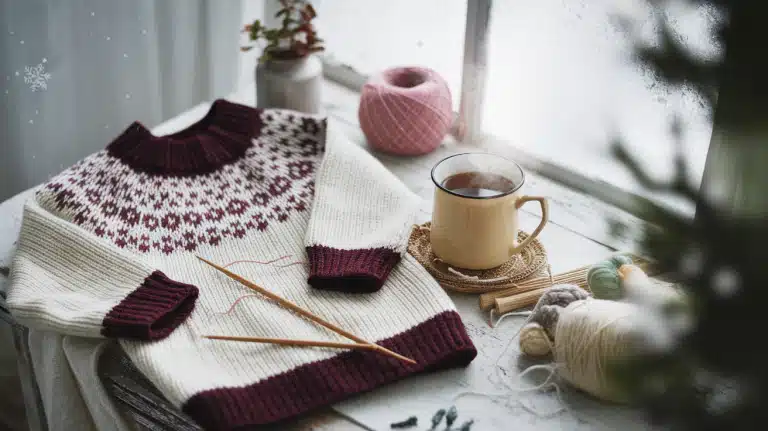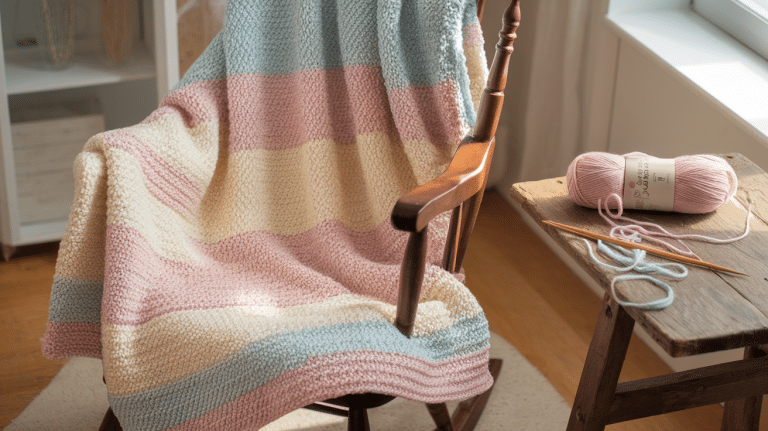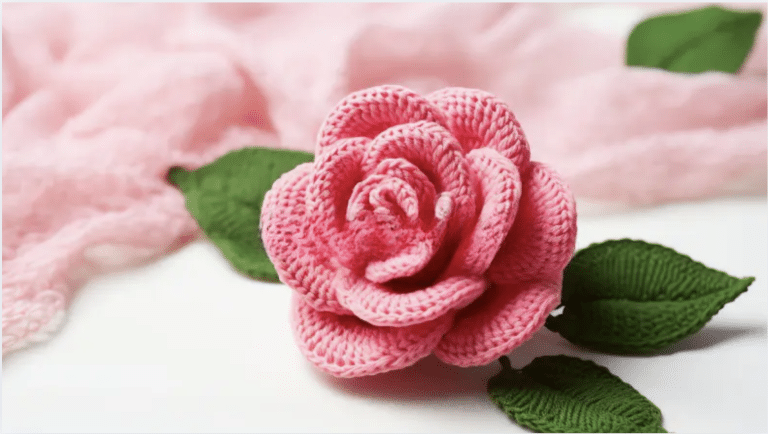Have you ever held a tweed jacket and wondered why it feels so different from other fabrics? Tweed isn’t just thick wool; it’s a fabric with a long history that reaches back hundreds of years.
People in the cold, windy lands of Scotland wore it to stay warm and dry, and that same strength is still part of tweed today.
Tweed is rough, tough, and made to last, which is why it’s still popular. Over time, it has moved from farms and hills to fashion shows and city streets.
In this guide, I’ll show you what makes tweed special, explain the different types, such as Harris Tweed and Donegal, and help you learn how to tell if a piece is high quality or not.
You’ll see why tweed is more than just fabric; it’s a smart choice that mixes history, strength, and style and might be the right addition to your closet.
The Origin and History of Tweed
Tweed began in Scotland, where people needed tough fabric to stay warm in rough weather. It wasn’t just clothing, it was something they relied on to get through cold, wet days.
The word “tweed” has a strange origin. In the 1830s, a London merchant misread “tweel” (the Scottish word for “twill”) as “tweed,” maybe because of the nearby River Tweed.
The name stuck and spread quickly. Harris Tweed stands out as something truly rare.
It’s made only in the Outer Hebrides by locals who weave it at home using pure new wool dyed and spun on the islands. It’s even protected by law.
By the late 1800s, tweed became popular with the wealthy. After Prince Albert bought Balmoral in 1848, he designed a special tweed for the estate.
That started a trend. Soon, upper-class families wore tweed in the countryside. In the 1900s, it became linked to smart, stylish people. Today, top designers still use it, proving its lasting value.
Is Tweed Wool?
Yes, real tweed is made from wool, usually sheep’s wool, and that’s what gives it its strength and warmth.
This type of wool isn’t soft like cashmere. It’s coarse, thick, and built to last through cold, wet weather.
The wool often comes from hardy sheep breeds like the Scottish Blackface. It’s woven using patterns like twill or herringbone, and many tweeds have tiny flecks of color that make each piece look unique.
While some newer tweeds mix wool with cotton, silk, or artificial fibers to change the feel or weight, many people still prefer 100% wool. Why? Because it’s the real deal.
The wool used in traditional tweed is often unprocessed and keeps its natural oils, like lanolin, which helps resist water. That’s why it worked so well in the rainy Scottish countryside.
When you feel true wool tweed, it won’t be smooth. It’s thick, a little scratchy, and meant to handle rough wear year after year.
Types of Tweed Fabric
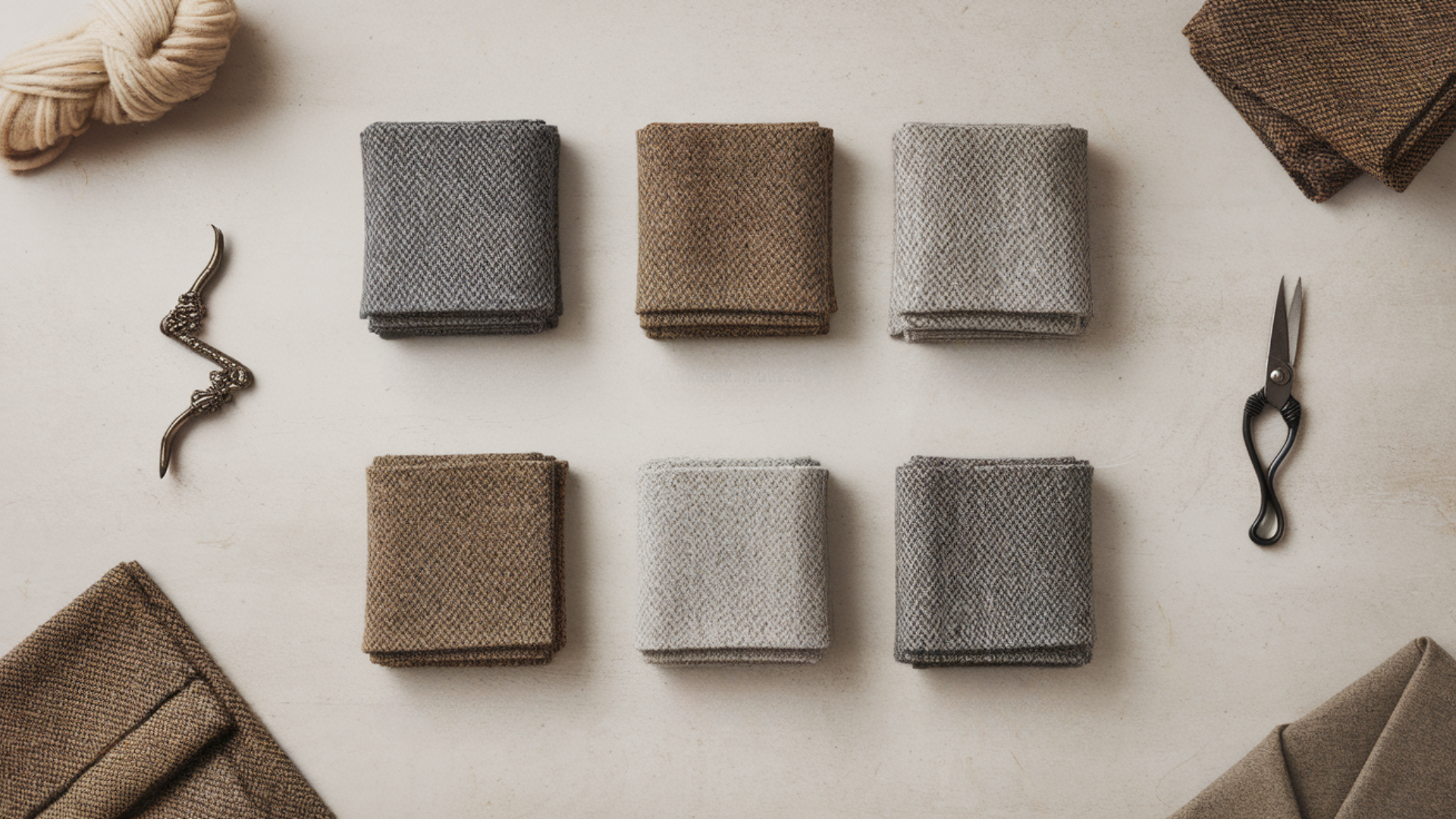
Tweed isn’t just one kind of fabric; it comes in many different styles, each with its own look, feel, and history.
These types of tweed were shaped by where they were made, the kind of wool used, and the purpose of the fabric.
Some are soft and smooth, while others are thick and rough. Certain tweeds are made only in small parts of Scotland or Ireland and follow very old traditions.
Others were created for use in sports or country life. Some have bright colors mixed in, while others use earthy tones that blend in with nature.
If you’re thinking about adding tweed to your wardrobe, it helps to know the differences. A few of the most well-known types of tweed are:
- Harris Tweed
- Donegal Tweed
- Shetland Tweed
- Saxony Tweed
- Cheviot Tweed
- Estate Tweeds
Common Uses of Tweed
Tweed is a classic fabric known for its warmth, durability, and timeless charm. While it’s often associated with traditional jackets, its uses go far beyond outerwear.
Some of the most popular and practical ways I’ve seen tweed used in both fashion and home design are:
- Outerwear: Tweed jackets and coats are still the most common use. They’re warm, strong, and perfect for handling bad weather.
- Men’s and Women’s Jackets: Men’s sport coats and women’s fitted tweed jackets are stylish staples. These pieces are both timeless and versatile.
- Suits and Formalwear: Tweed suits offer a smart, classic look. Once worn only in the countryside, they now show up in cities, especially during winter weddings and cold-weather events.
- Accessories: Tweed is a popular choice for flat caps, handbags, and even shoes. These items are both fashionable and functional.
- Home Décor: You’ll find tweed in pillows, throws, and upholstery. It’s a great choice for home items because it’s durable and attractive.
- Modern Fashion: Today’s designers keep tweed fresh by using it in unexpected ways, like skirts, shoes, or printed versions on other fabrics, while still honoring its traditional roots.
Tweed continues to evolve while staying true to its classic appeal. Whether in fashion or home décor, its lasting quality and style make it a favorite of mine for both traditional and modern designs.
Conclusion
Tweed is more than just cloth, it’s a part of history you can wear and enjoy. It began as a way to stay warm and dry in the tough Scottish weather.
But over time, it grew into something much bigger. From farms to fashion shows, tweed has stayed strong and meaningful.
Think about the kind of tweed that fits your life. Maybe you like the rich, strong feel of Harris Tweed.
No matter what type you pick, a good tweed piece gets better the more you wear it. It shapes to your body, softens just enough, and becomes something you’ll want to keep.
Take care of it, and your tweed might last long enough to pass on to someone else. It won’t just be an old coat, it’ll be full of memories.
Do you have a favorite tweed jacket or special moment tied to tweed? I’d love to hear your story. Share it below.
If you enjoyed this blog and you’re ready to plan your next project, don’t miss my guide on blanket color schemes—it’s packed with simple ideas to help you choose colors that look great together and make your blanket stand out!
Frequently Asked Questions
Can Tweed Be Worn In Warmer Weather?
Yes, some tweeds are made lighter for spring or cool summer days. These versions use finer wool and looser weaves. Still, traditional tweed is thick and best for fall or winter. If you run warm, it’s better to wear it during colder months or in air-conditioned settings.
Does Tweed Itch?
Traditional tweed can feel scratchy because it’s made from coarse wool. To avoid itching, wear a soft layer underneath like cotton or silk. Some newer tweeds mix in smoother fibers to make them more comfortable. If you’re sensitive to wool, modern blends are a good option.
Can Tweed Be Waterproof?
Tweed naturally resists water a little because of lanolin in the wool. It can handle light rain but isn’t fully waterproof. Some modern tweeds are treated to keep out more water. For heavy rain, you’ll still want a proper waterproof layer on top of your tweed.
How Do I Remove a Stain From Tweed?
Act fast when you see a stain. Gently blot the spot with a clean cloth—don’t rub or scrub it. For deeper stains, use a damp cloth with mild soap. Then, let the fabric air dry flat. Avoid heat or harsh cleaners, as they can damage the wool.
Is Vintage Tweed Better Than New?
Well-kept vintage tweed often has great craftsmanship and a classic feel. It can be thicker and last longer if stored right. But modern tweed offers fresh styles and lighter blends that some people prefer. It really depends on what look, fit, and comfort you want.


